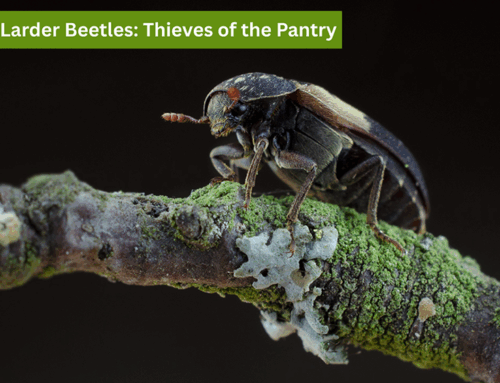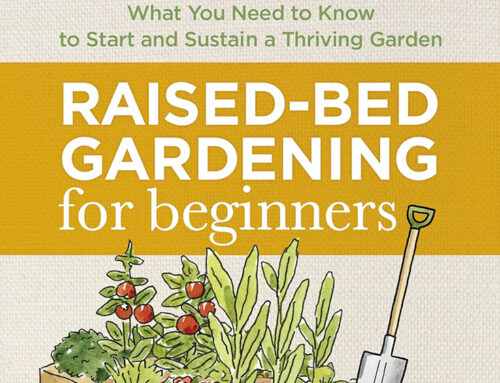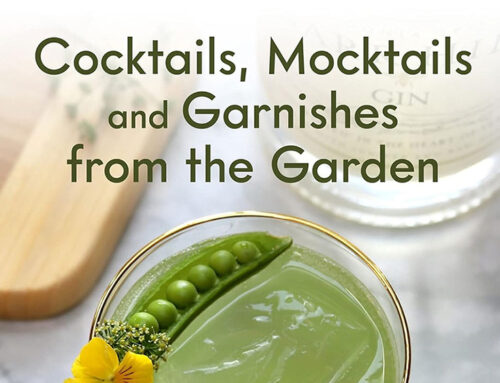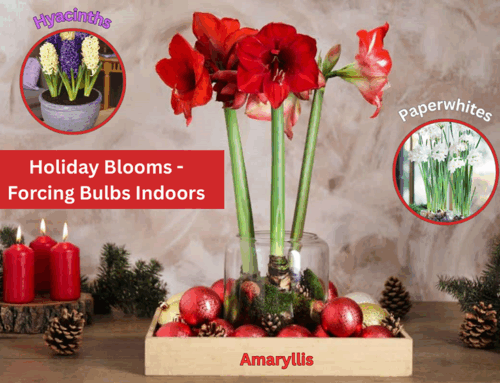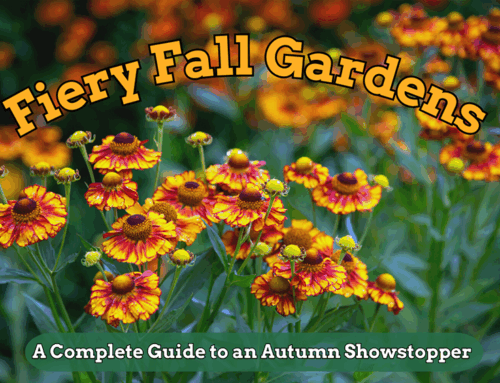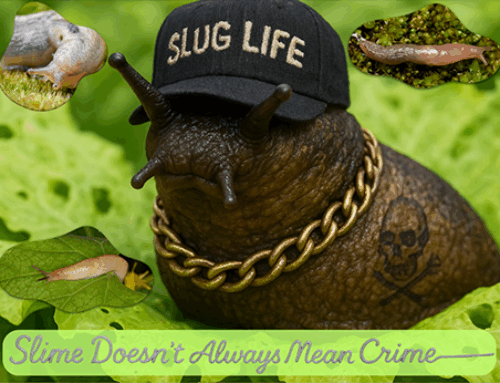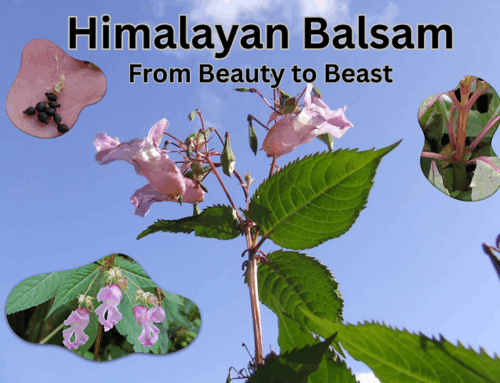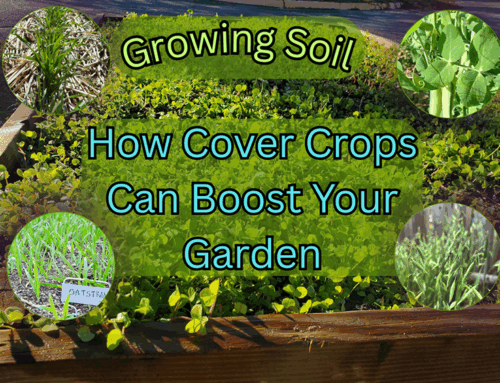June Gardening Chores
by Brett Kerley
As Edmonton gardeners know, the local growing season is short but intense. June is a powerhouse month—the last frost is behind us, the days are long (up to 17 hours of daylight!), and both plants and weeds are in full growth mode. To ensure a healthy, productive garden, here’s a look at June gardening chores.
General Garden Maintenance
Watering
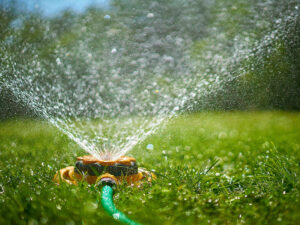
Sprinkler watering grass
Soil checks are crucial: Use your finger or a moisture meter to ensure the top 2–4 inches of soil aren’t drying out. Loamy soil may retain water longer than sandy soil, so adjust accordingly.
A deep soak is better than a light sprinkle: Deep watering encourages roots to grow down, making plants more drought-resistant. Apply water slowly to ensure it penetrates.
Timing matters: Water between 6–10 AM to reduce evaporation and fungal risk. Avoid evening watering unless absolutely necessary.
Mulching
Apply mulch now if you haven’t already: 2–4 inches of straw, bark, or shredded leaves helps conserve moisture, suppresses weeds, and moderates soil temperature. Refresh mulch in perennial beds and veggie rows to replace any that has broken down or blown away.
Weeding
Key weeds to watch for in Edmonton include chickweed, lamb’s quarters, dandelions, and shepherd’s purse. Use a sharp hoe in dry conditions to slice weeds at the base, and hand-pull before they flower.
In the Vegetable Garden
Planting
Direct sow in June:
- Beans (bush and pole)
- Corn (early-maturing varieties work best in Edmonton)
- Squash, pumpkin, cucumber
- Beets, carrots, Swiss chard, turnips
Transplant now:
- Tomatoes (hardened off)
- Peppers and eggplants
- Broccoli, cabbage, cauliflower (early June ideal)
Succession sowing:
- Lettuce, spinach, arugula, radishes: Sow every 10–14 days until late July
- Peas: Still OK to sow early in the month, but use short-season or dwarf varieties
Feeding & Soil Care
Heavy feeders (tomatoes, corn, brassicas) benefit from regular feeding every 3–4 weeks. Use compost tea, fish emulsion, or balanced granular fertilizer (10-10-10). Specialised stores like Apache Seed or any greenhouse can provide you with these kinds of fertilizers.
Side-dress root crops (carrots, beets) with compost, not nitrogen-rich fertilizer, to avoid excess leaf growth.
Pest Control
Inspect plants daily: Under leaves and near soil for eggs or larvae.
Pests to watch out for:
- Flea beetles: Affected plants (esp. radish, arugula) have small holes in leaves. Use floating row covers.
- Cabbage worms: Check undersides of leaves; hand-pick or use Btk (Bacillus thuringiensis kurstaki).
- Cutworms: Protect seedlings with collars or crushed eggshell barriers.
Support & Pruning
Stake or cage tomatoes, especially indeterminate varieties. Pinch suckers on tomato plants if using a vertical growing method.
Train cucumbers and peas up trellises to save space and reduce disease risk.
Flowers and Perennials
Annual Flowers
- Time to plant tender annuals: Petunias, marigolds, zinnias, cosmos, alyssum, and impatiens can safely go in.
- Pinch back tips of leggy plants to encourage bushier growth.
- Water containers and hanging baskets daily or as needed—especially in heat and wind.
Perennials
- Deadhead flowers as soon as they fade to encourage reblooming (e.g., columbine, coreopsis).
- Divide spring bloomers like primroses and creeping phlox after flowering.
- Fertilize lightly if not done in spring. Use compost tea or slow-release organic pellets.
Staking
- Stake delphiniums, peonies, and tall iris now before stems flop.
- Use grow-through rings, bamboo, or decorative obelisks for support.
Trees and Shrubs
Watering
- Established trees usually don’t need water unless it’s hot and dry for more than a week.
- Newly planted trees (last 1–2 years): Water deeply once a week at root zone, not base of trunk.
- Pruning
Avoid major pruning now unless necessary for safety or disease removal. It’s OK to prune:
- Suckers from base of tree
- Dead or broken branches
- Water sprouts (vigorous vertical growth from branches)
Wait until after flowering to prune shrubs like lilac and forsythia.
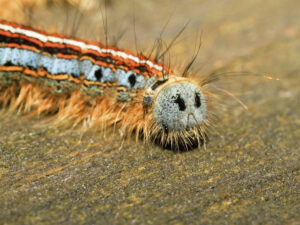 Pests
Pests
Watch for:
- Tent caterpillars: Remove and destroy nests early in the morning.
- Aphids: A hard spray of water or insecticidal soap can knock them back.
- Bronze birch borer or ash borers: Watch for wilting or dieback in top branches. (see our article on the Emerald Ash Borer)
Lawn Care
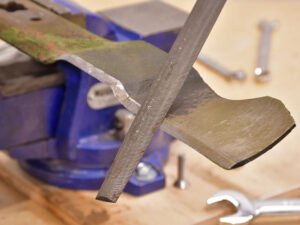 Mowing
Mowing
- Set blade to 2.5–3 inches. Taller grass shades soil and retains moisture.
- Mow frequently enough to never remove more than 1/3 of grass height.
- Sharpen blades to avoid tearing the grass tips (which causes browning).
Feeding
- Early June is your last window for spring fertilizer (slow-release nitrogen).
- Don’t fertilize during a drought or heat wave.
Watering
- Lawns need 1 inch/week. Use a rain gauge or tuna can to track. (old trick I used to use)
- Water deeply and early morning, 1–2 times per week, to encourage drought resilience.
Containers and Hanging Baskets
Daily Care
- Check containers for dryness every day; they dry out faster than in-ground beds.
- Fertilize weekly with liquid 20-20-20 or bloom booster (e.g., 15-30-15).
- Pinch back trailing plants like calibrachoa and petunias to encourage fullness.
Container Tips
- Use potting mix, not garden soil (too dense for pots). See Container Soil Tips
- Ensure pots have drainage holes.
- Rotate baskets for even sun exposure and growth.
Harvesting
Begin harvesting early crops, including leaf lettuce, radishes, and green onions. Spinach will bolt in heat, so watch carefully and harvest as soon as it’s ready!
Rhubarb is ready when the stalks are 7-15 inches long. Harvest no more than 1/3 of stalks at a time. To pick rhubarb, grasp the stalk near the base, lean it to the side, and then gently twist and pull the stalk up. Avoid using a knife, as this can introduce pests and diseases.
June-bearing strawberries ripen mid- to late-June. Watch for slugs and birds—use mesh netting or straw mulch to protect the berries.
Support Pollinators and Beneficial Insects
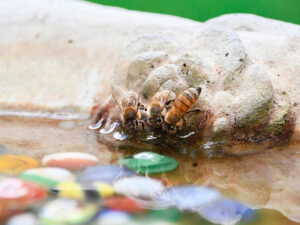 Support Bees & Butterflies
Support Bees & Butterflies
- Plant native flowers: yarrow, monarda, goldenrod, coreopsis. Unsure what to plant? Visit the Edmonton Native Plant Society at https://www.enps.ca/
- Avoid spraying pesticides during bloom periods or in daytime.
- Add a bee bath: a shallow dish with water and stones for perching.
- Let some herbs flower: chives, thyme, and dill attract pollinators and ladybugs.
Final Thoughts
June in Edmonton is a golden window of growth. Plants are hitting their stride, and while the days are long, the time you spend now will pay dividends all summer long. Stay observant, act early, and enjoy the beauty of your garden in full swing.
Until next thyme, happy digging!


